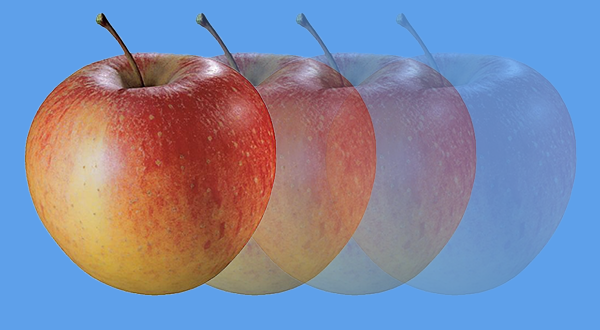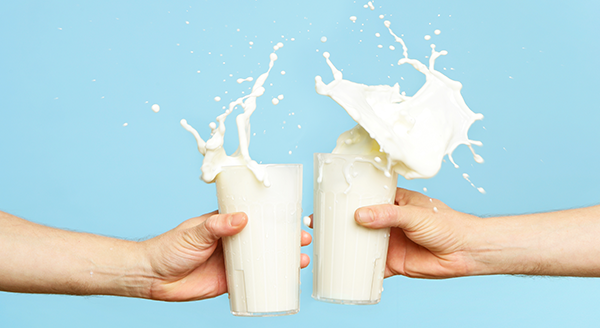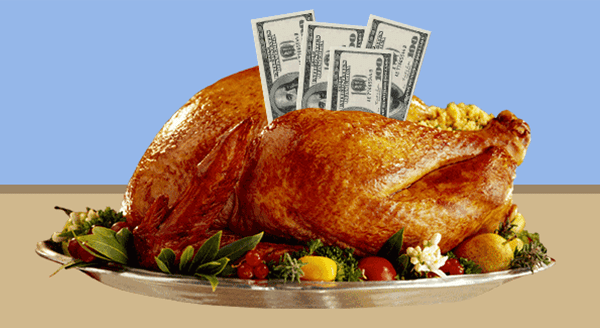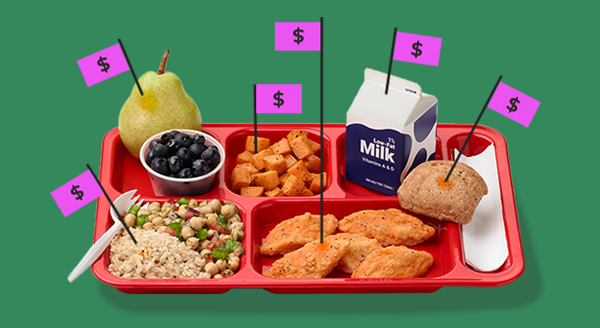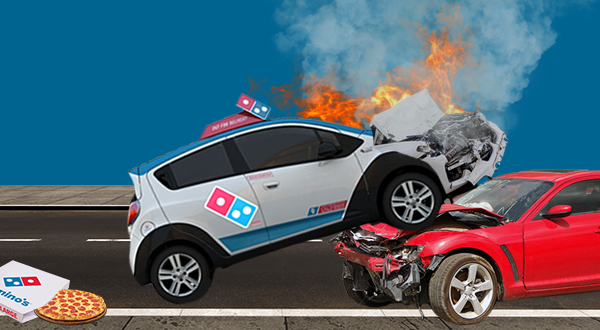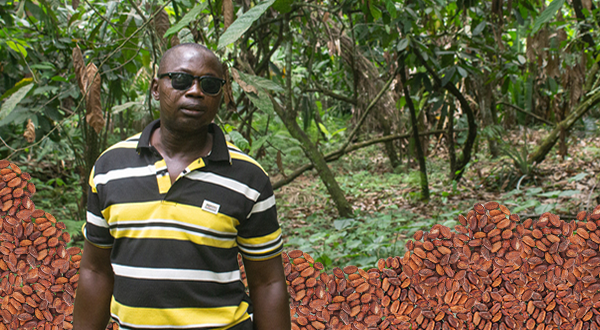The grill made its debut 30 years ago. Tons of people still buy them

Leon Dreimann still remembers the flashing red lights.
He was at the QVC Studios in Pennsylvania watching his business partner George Foreman chat with two co-hosts during a TV spot for Foreman’s namesake grill. The pair got carried away in their conversation and forgot about the heavyweight prizefighter standing with them. Foreman improvised, grabbing a burger fresh off the grill, placing it between two buns, and taking a bite on live TV.
Suddenly, the phone lines were overrun with callers. QVC shifted into emergency mode.
“Literally, a red siren light starts blaring in every corridor,” says Dreimann, then the CEO of Salton, Inc., the exclusive seller of the Foreman Grill.
Workers at the QVC Studios called it “going red.” Dreimann says he looked on as janitors, accountants, and warehouse workers stopped what they were doing and grabbed the nearest phone, taking sales calls to assist the overwhelmed operators — the fervor induced entirely by the boxer’s snap decision to eat a hamburger.
Such was the allure of Foreman and the George Foreman Grill during its late 90s and early 2000s heyday.
This year marks the 30-year anniversary of the grill, officially known as the George Foreman Lean Mean Fat Reducing Grilling Machine. After a slow start, it became an indelible part of ‘90s consumer culture and the world’s most popular product for cooking hamburgers, hot dogs, salmon, and just about everything else (Oprah Winfrey preferred it for bacon).
The Hustle
But the Foreman grill isn’t just a fun relic from America’s peak infomercial era. It was also a cash cow. Dreimann says Salton sold as many as 14m grills in a single year. In 2000, QVC claimed it sold more Foreman grills than any other small kitchen appliance.
And, surprisingly, 30 years later, the Foreman Grill remains a champion. Monthly sales figures on Amazon indicate that, at the peak of this summer’s grilling season, the standard Foreman Grill outsold offerings from rivals Ninja and Cuisinart, not to mention the most popular outdoor grills from Weber and others.
Championship boxing titles (and panini presses) come and go. But the George Foreman Grill is forever.
The origins of the grill
In May 1994, the country’s top kitchenware makers flocked to San Francisco’s Moscone Convention Center to display their new innovations at the annual Gourmet Products Show.
It was a spectacle, at least for cooking and cutlery obsessives. There was a satin-finished garlic press, a programmable coffee maker that could be set 24 hours in advance, and a set of knives crafted by lasers. At one point, a 70-year-old woman competed against a U.S. weightlifting champion in a dough-kneading contest. (It was a tie.)
Salton Inc., meanwhile, garnered attention with a new pasta maker product called the Pasta Maker, a collaboration with infomercial wiz Ron Popeil (the “Set It and Forget It” guy). The company, which rose to prominence in the 1950s with a popular warming tray, was purchased by Dreimann and two others in 1987.
They sold thousands of household items like the Breadman and Juiceman and grew steadily for the next few years. Dreimann earned a reputation as a top marketer and risk-taker who forged key relationships with retailers.
“They took pretty pedestrian products and really turned them into successes,” says A.J. Riedel, a former housewares marketer.
Leon Dreimann (right) was the CEO of Salton, Inc. when it acquired the Foreman Grill. (Clayton Chase/WireImage via Getty Images)
At the trade show, along with the Pasta Master, Salton introduced a product called the Lean Mean Fat Reducing Grilling Machine. The name was inspired by the prison football team in the Burt Reynolds movie “The Longest Yard.”
But retailers weren’t interested.
“Everybody was all over the pasta machine,” Dreimann says. “Nobody wanted the grill.”
Salton had discovered it months earlier, according to Barbara Westfield, a former Salton senior VP. Two men, Michael Boehm and Robert Johnson, walked into her office in the Chicago suburbs with a small grill painted the color of a taxicab. They were employees of Tsann Kuen, a Taiwanese electric appliances company.
Their latest contraption, designed by Boehm and engineered by Johnson, was called the Fajita Express, Westfield says. At the time, a sandwich maker fad had just run its course, leaving manufacturers stuck with leftover components and looking for new products that used the same parts.
The Fajita Express fit the bill: Similar to a panini press, it featured a cooking plate nestled between heating elements on the top and bottom, so ground beef or chicken could be cooked on both sides at the same time. Users could place taco shells or tortillas in a separate dish at the foot of the grill and slide the meat directly into the shells.
Westfield believed the grill had potential and shared details with Dreimann.
They liked the grill’s sliding ability but not for tacos — Dreimann says at another meeting Salton and Tsann Kuen employees placed a book under its back legs and watched the fat run off. Boehm, who couldn’t be reached for comment, has said he originally designed the grill for hamburgers before opting for a more versatile look and name, the Short-Order Grill.
Either way, Salton bought exclusive rights to sell the grill from Tsann Kuen. Although Boehm came up with the original design, he said he didn’t receive royalties.
An early drawing of the grill designed by Michael Boehm and engineered by Robert Johnson. (US Patent and Trademark Office)
After the grill flopped at the 1994 Gourmet Products Show, it didn’t seem like it would make much money anyway.
But Michael Srednick, a marketer who sold lavish Chinese antiques through his Srednick Collection in Los Angeles, liked what he saw at the show. Dreimann says Srednick discussed the grill with Sam Perlmutter, an entertainment attorney and movie producer, who sent one to Foreman. (Boehm has claimed he sent a prototype of the grill to Foreman.)
The boxer, famous for a technical knockout of Joe Frazier in 1973, had recently won back the heavyweight crown at age 45. He’d pitched multiple products throughout his career. Burgers had always been his favorite food. It was a match made in ‘90s heaven.
Foreman and Salton partnered up in a profit-sharing deal, Dreimann says:
- The boxer received 45% of grill profits, as did Salton.
- Perlmutter and Srednick split the remaining 10%.
They hoped for a better showing at the 1995 Gourmet Products Show, which happened to be in Las Vegas not long after Foreman eked out a victory over Axel Schulz to retain his heavyweight belt. He and Salton hosted a cocktail hour for VIP retail employees that lasted long into the evening, and retailers like Target and Macy’s decided to stock the $39.99 grill in their stores.
Yet over the next few months, into the holiday season, it fizzled.
$4m royalty checks
Sales for the grill were so bad that after Christmas major retailers wanted to return their inventory to Salton. Something had to change.
The company increased the surface area of the grilling plate, so users could grill four burgers at a time instead of two. Dreimann also heard from Popeil, the reigning infomercial king, with an enticing offer: He offered to appear on the infomercials with Foreman and inject his unparalleled ability to sell on TV.
Ron Popeil nearly got a piece of the Foreman Grill. (YouTube)
Popeil, though, kept requesting tweaks to the grill and asking for more money. Salton just wanted to pay an appearance fee to Popeil; Dreimann says Popeil wanted half of Foreman’s take.
“Eventually we would have probably made a deal with Ron,” Dreimann says. “But we didn’t have to.”
That’s because, around this time, as Dreimann and Salton chairman David Sabin recall, Foreman made his fateful QVC appearance. When Foreman ate the burger on live TV, Sabin says, Salton sold an astounding ~40k grills in the next three minutes. (At the time, QVC typically registered ~74k calls per hour or ~1.2k per minute.)
Meanwhile, for the product’s infomercial, Salton swapped a Foreman boxing scene for a scene of him grilling with his family.
The Hustle
The larger grill, bolstered by QVC appearances, the new infomercial, and Foreman’s celebrity, began to sell. Word of mouth regarding the grill’s quality did the rest. Salton had ~3k different products, and 90% of its mail was related to the Foreman grill — most of it positive.
The company sold $5m worth of grills in 1996. Sales ballooned to ~$200m in 1999 and more than $300m in 2000.
Foreman’s share was huge. He told AARP magazine his monthly royalty check once totaled $8m. Dreimman says Foreman’s monthly total reached ~$4m — a number that fits closer to reported sales figures and quarterly royalty totals the company booked in 1999.
At the end of that year, Salton reached an agreement to buy Foreman’s name in perpetuity for $137m, paid out in increments of roughly $20m over five years, plus stock. Foreman, who did not respond to an interview request made through his website, continued marketing for Salton as the grill expanded to overseas markets.
The Hustle
The deal worked out well for Salton, as sales hit their highest levels after the international expansion.
For Dreimann, it wasn’t the numbers that captured how popular the grills had become — it was the amount of workers and equipment required to keep up the production and distribution of grills.
One year before the Christmas rush, he visited a warehouse in Long Beach, California, where grills were stored after they arrived from China. He saw a line of trucks — waiting to drop off shipping containers with grills — backed up for nearly two miles.
The mystique of the George Foreman Grill
Most popular kitchen wares are fads. They last for two or three years then disappear. Even successful items that span decades get overtaken by copycats or outpaced by new technologies.
But the George Foreman Grill hasn’t been surpassed yet.
- The standard four-burger version of the grill — there were dozens of indoor and outdoor versions available at one point — sells for $34.99, less than it cost in 1995.
- Amazon “bought in the last month” data showed 6k+ of these Foreman grills were sold in June.
The Hustle
Salton was absorbed by a hedge fund in the mid-2000s, after facing a short sale crusade by investor Jim Chanos, huge debts, and problems that came from rapid growth. The conglomerate Spectrum Brands took ownership of the grill. A spokesperson for the company declined to offer any information about sales numbers or whether the company even markets the grill anymore, saying only that it’s sold in stores and online.
Sabin, the former Salton chairman, believes the reason for the grill’s longevity is its quality.
“The product is so easy to use and simple and does what it says,” he says. “That’s what makes a good product.”
One Foreman Grill owner told The Hustle she’s had the same grill since 2008. Another said she prefers thinking of new ideas for her Foreman Grill rather than using an air fryer.
Jack O’Brien, 29, received one a few years ago as a semi-gag gift from his younger brother when he moved to New York City. But he uses it almost every day to grill a turkey sandwich, surprising friends who see it in the kitchen when they visit.
“They’re like, ‘You’re still using the Foreman?’” O’Brien says. “I’m like, ‘Hell yeah. It’s great.’”
Food



